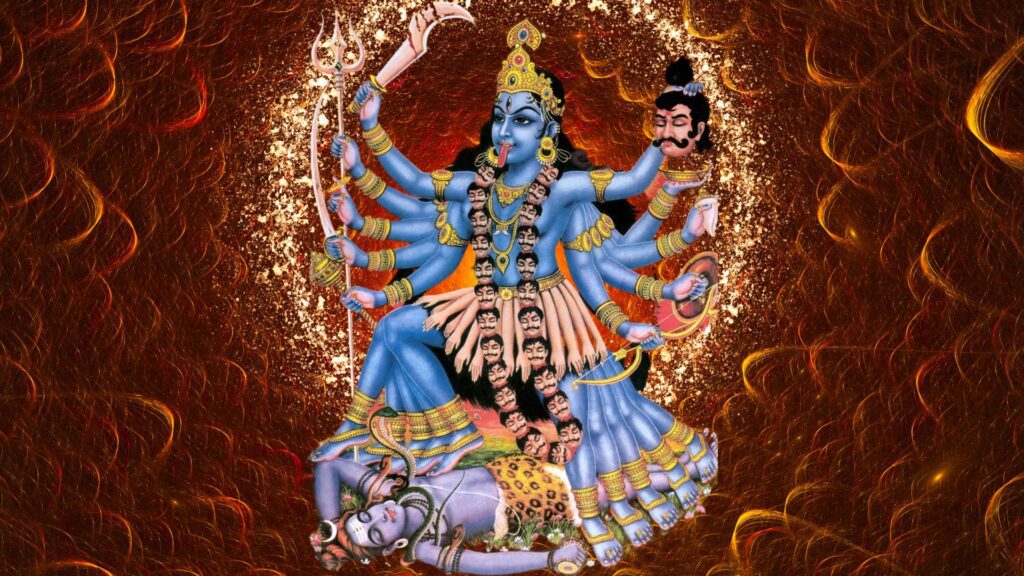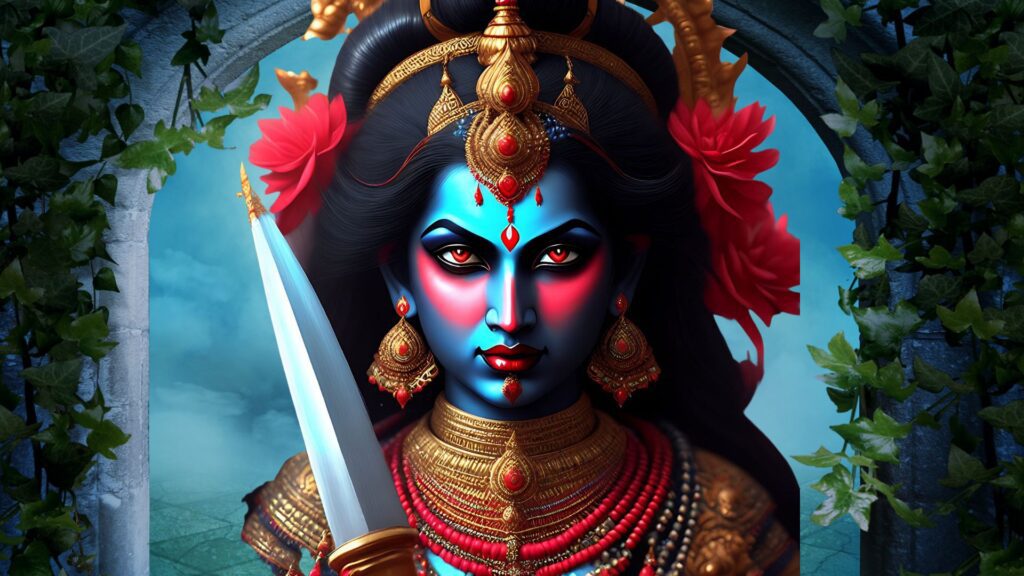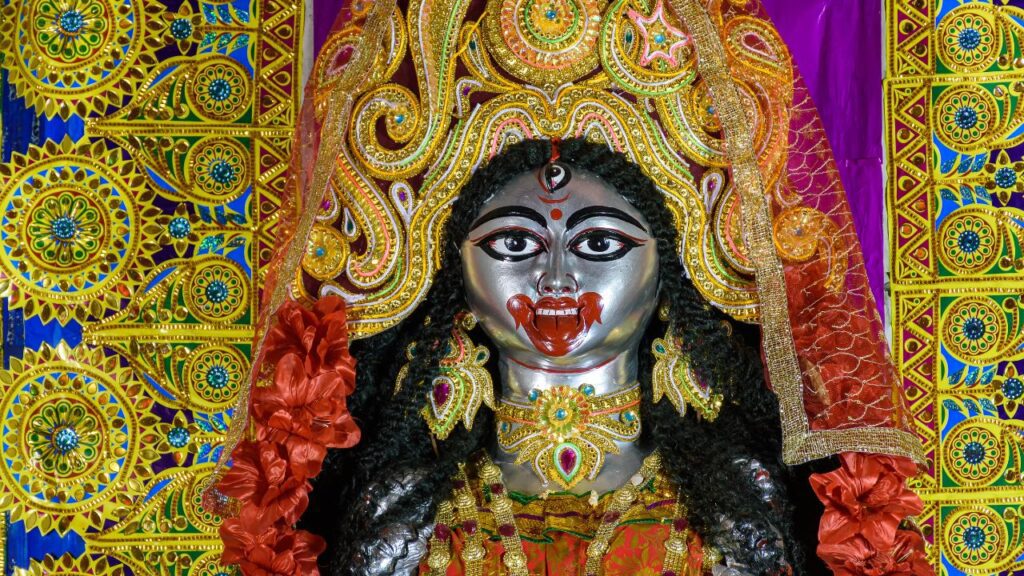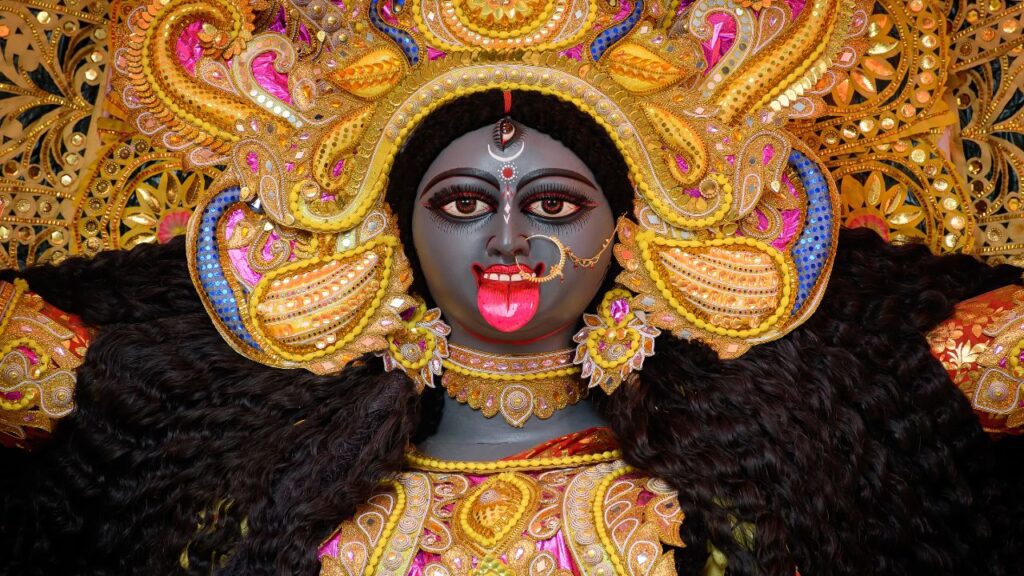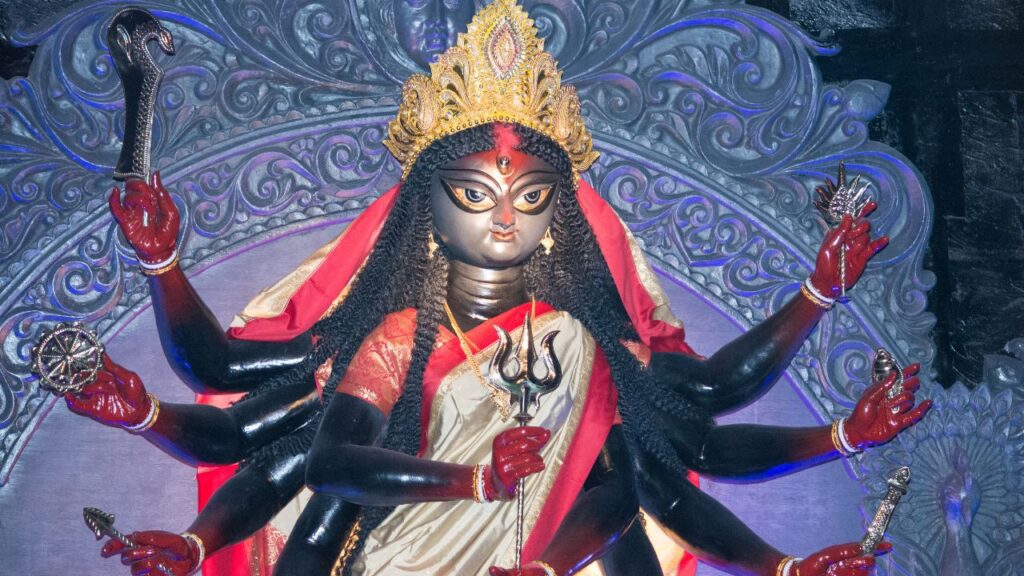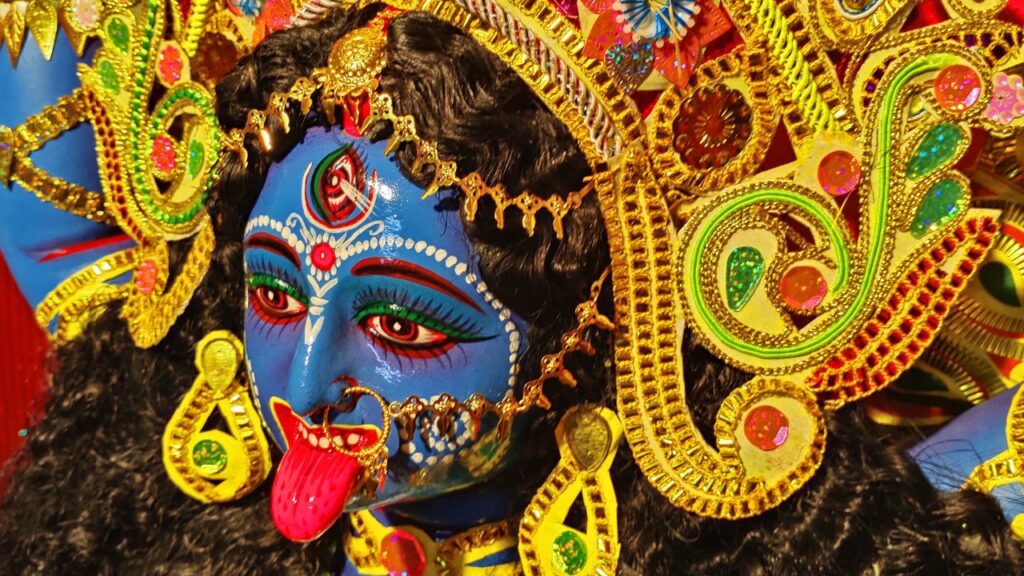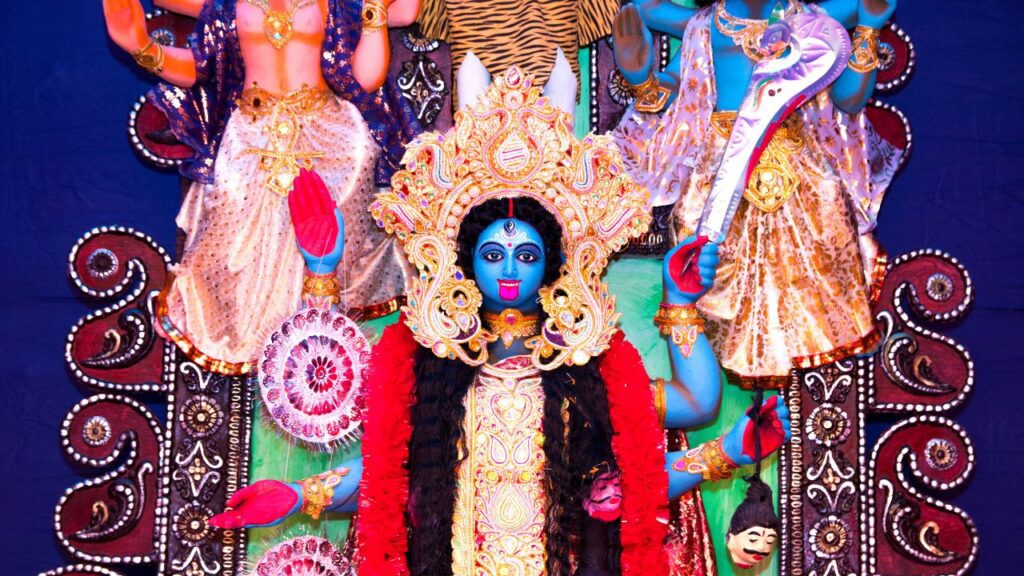Kali Iconography: Iconography of Goddess Kali
Introduction
Devotees all around the Hindu world have long been enthralled by Goddess Kali, the ferocious and powerful formative of the Divine Mother. Particularly in the Western culture, her richly symbolic iconography has sometimes been a cause of attraction and misinterpretation. On closer examination, though, Kali’s multifarious images expose a complex and nuanced view of the divine that questions our beliefs on the nature of good and evil, gender, and the mother.
The Cosmic Movement of Kali
Kali’s look stands out as quite different from the traditional images of Hindu goddesses. Her bare body, unrestrained hair, and dark skin grab attention right once and inspire wonder as well as fear. But this imagery reflects her cosmic activities within the divine system, not only her terrible appearance.
Value of Kali’s Dark Complexion
Many others read Kali’s dark color as a sign of her infinite and all-encompassing nature. Her color reflects the primal emptiness from which all creation arises, much like the gloom of the cosmos. This darkness is to be embraced as the womb of the divine, the source of all manifestation, not feared.
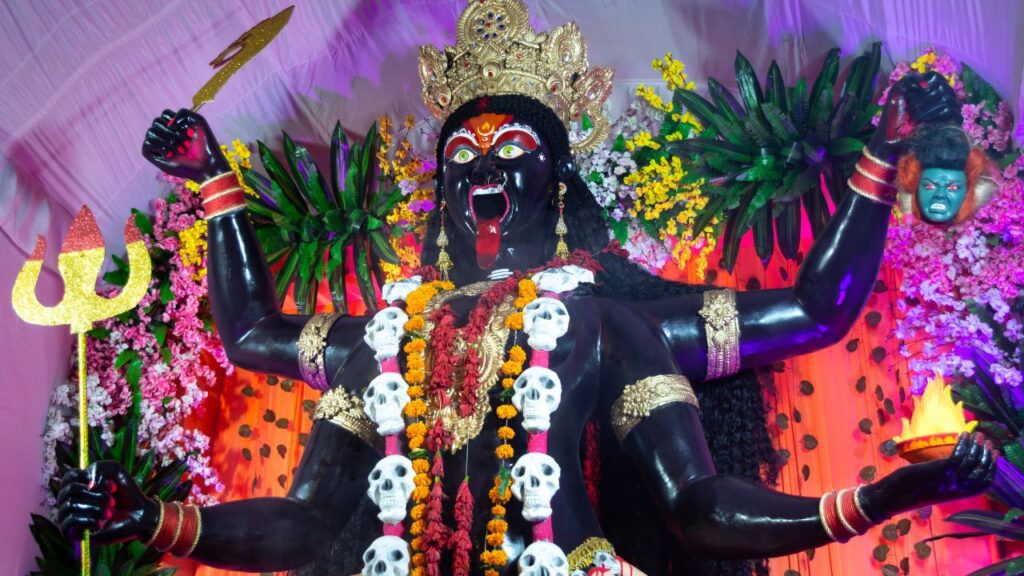
Unbound Hair and Naked Form
Kali’s bare body and unrestrained hair suggest her release from social conventions and human limitations. Her look captures the unrestrained power of nature, which is not constrained by the synthetic laws and restrictions enforced by human civilization. This symbolism tells us that actual divinity goes beyond the boundaries of the earthly.
Garland of Severed Heads with Skirt of Hands
Many times, the garland of severed heads and the skirt fashioned of human hands that covers Kali’s figure are taken as indicators of bloodlust and violence. But these components capture the cyclical character of life, the cosmic order’s underlying continual dance of creation, preservation, and destruction. The hands represent the many deeds and karmic consequences that are finally absorbed back into the divine; the severed heads stand for the destruction of the ego.
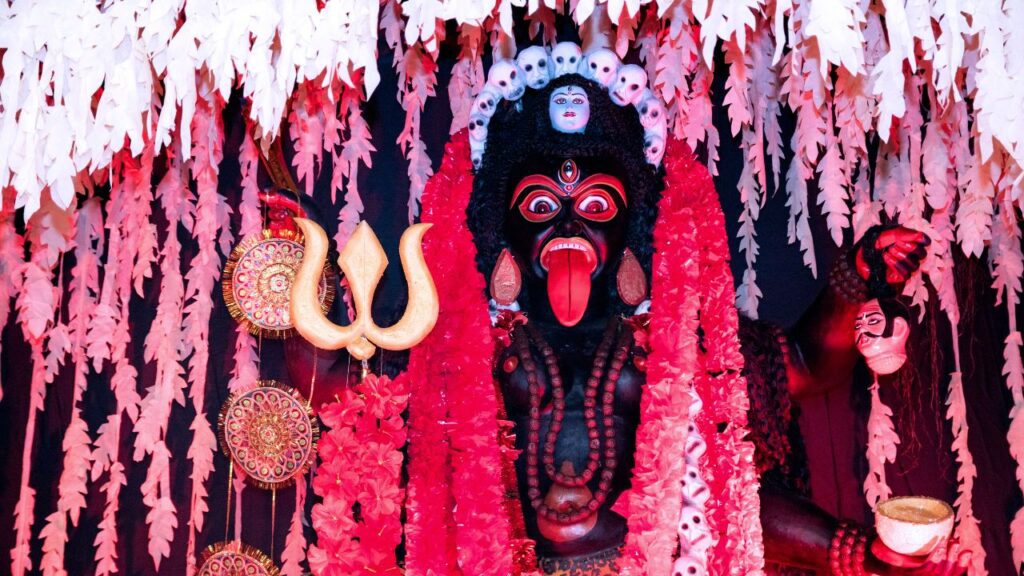
The Fierce Gaze and Proving Tongue
Often seen as signs of Kali’s bloodlust, are her sharp eyes and extending tongue. Deeper knowledge, however, reveals that these qualities show her capacity to face and conquer the powers of ignorance and darkness. Particularly the tongue is thought to represent the repression of passion and desire since Kali’s white teeth press on it, therefore indicating the victory of truth and wisdom over the seductions of the physical world.

Kali and the Evil Challenge
Kali’s images forces us to face the complexity of the divine and questions our traditional ideas of good and bad. Her strong and destructive qualities are not intrinsically bad; rather, they are required parts of the cosmic cycle. She is the great equalizer, the agent of change indispensable for the universe’s ongoing development, the force tearing down the old to create space for the new.
Kali as the demons’ Vanquish
Kali’s neck’s garland of severed demon heads is evidence of her function as the vanquish of evil. This picture, then, should be seen as a metaphorical depiction of her capacity to conquer the ego, attachment, and ignorance that afflict the human psyche rather than taken literally.
Kali and the Ethical Ambiguity Conundrum
Kali’s symbolism forces us to face the underlying uncertainty at the core of the sacred, therefore subverting the conventional binary of good and bad. Her strong and destructive qualities are not only to be considered as absolutely bad; rather, they are necessary elements of the cosmic cycle, the agents of transformation required for the universe to keep developing.
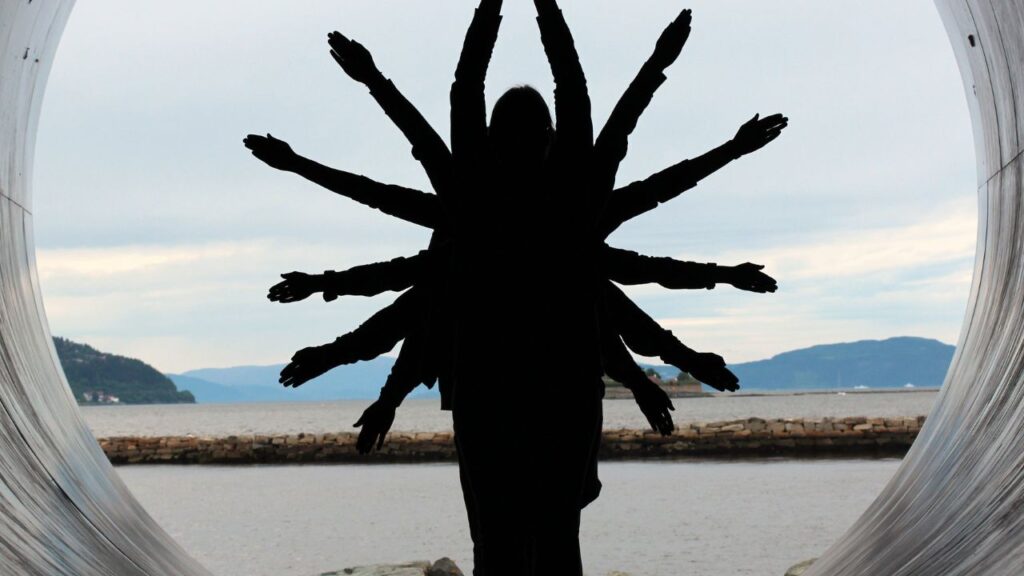
Kali and Hindu Inclusive Nature
The mythology about Kali’s worship and her iconography bear witness to the inclusive and multifarious character of Hinduism. Historically connected with the underprivileged and the outcasts, her cult shows how flexible the religion can be in allowing a wide spectrum of spiritual practices and belief systems.
Kali’s Arrival at the Cremation Ground
Kali’s link with the cremation grounds and the burning ghats—where Hindus cremate their dead—reflects her function as the goddess of the liminal regions, the locations where lines separating life from death are blurring. Her presence in these places reminds us of the cyclical character of life, the Hindu perspective’s central dance of creation and destruction.
Kali and the Tantrian Tradition
The Tantric tradition, which has sometimes been seen as a subversive and unorthodox kind of Hindu mysticism, has also been intimately associated with the devotion of Kali. Embracing Kali’s strong and unusual iconography, the Tantric practitioners show how flexible the religion is in allowing many kinds of spiritual practices and beliefs.
Kali and the Feminist Divine
Our conception of gender and the feminine divine is much influenced by Kali’s imagery and story. Her forceful and unreserved presence questions the patriarchal systems that have sometimes predominated the Hindu religious scene.
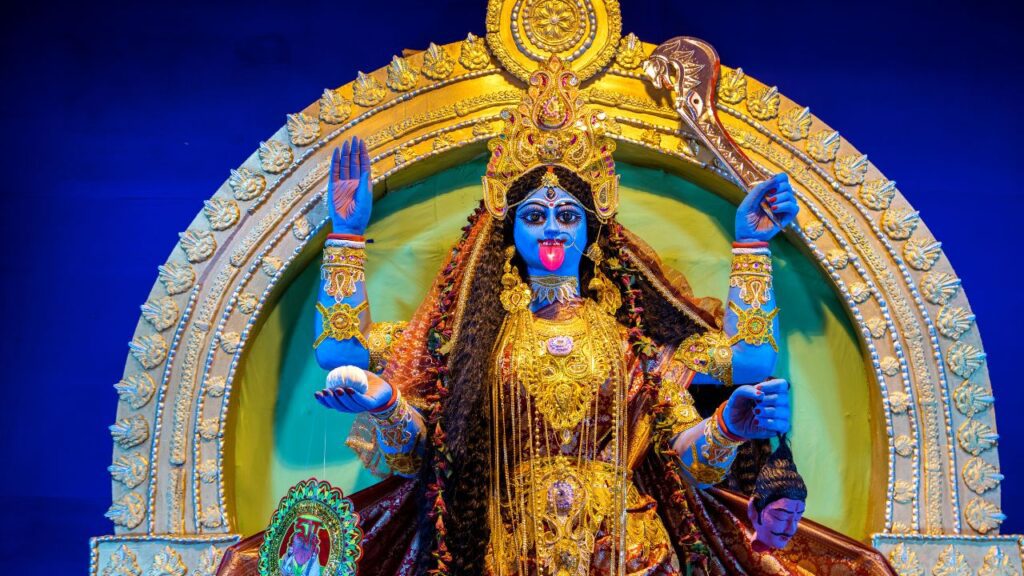
Kali as the Maternal Embodyment
With her large breasts and nouraging quality, Kali’s iconography captures the divine feminine as the mother’s incarnation. But this mother side is one of strong and unyielding protection, not of meek or subservient one.
Kali and the Challenge to Gender Convention
Kali’s naked body and her control over her lover, Lord Shiva, challenge conventional gender roles sometimes connected with Hindu deities. Her images questions the patriarchal systems that have aimed to imprison the divine feminine inside the limits of society expectations.
Feminism, Kali and Contemporary
Contemporary artists and academics who have sought to match Kali with the objectives of modern feminism have reinterpreted and recreated her imagery in recent years. These readings draw attention to Kali’s possibilities as a symbol of the unstoppable nature of the feminine divine, change, and empowerment.
Kali’s duality: destruction and compassion
Kali’s images reflect the duality of the divine—that which coexists with compassion and devastation inside the cosmic hierarchy. Although her strong and aggressive look could first cause anxiety and worry, a closer knowledge of her symbolism shows a more subtle and complicated goddess.
Kali, the Fierce Protector
With her several limbs and intimidating weaponry, Kali’s iconography captures her function as the ferocious defender of her followers. She is the living example of the divine will defending the good and defeating the powers of evil.
Kali’s Humane Heart
Benevolent under Kali’s tough appearance is a loving heart committed to her children’s nutrition and welfare. Her iconography, with its focus on the mother elements of the divine, reminds us that real power is found in the unwavering love and care the divine mother bestows upon her devotees rather than in the outward demonstrations of strength.
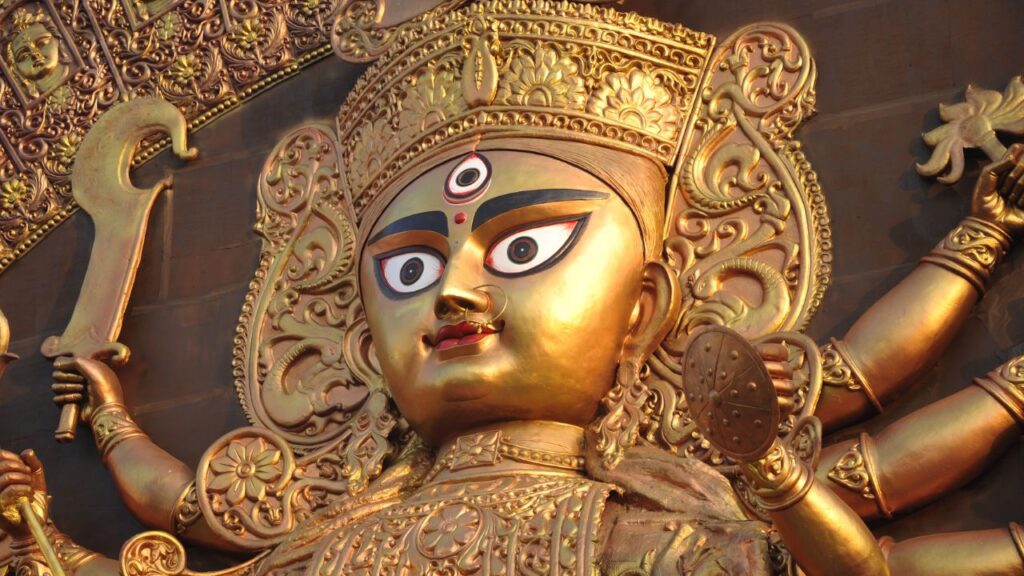
The transforming force of Kali
Kali’s iconography is evidence of the transforming power of the divine. Her capacity to destroy the old and bring in the new reflects the intrinsic cycle of change that the cosmic order undergo.
Kali the Agent of Change
With its focus on the collapse of the ego and the loss of connection, Kali’s iconography captures her function as the agent of metamorphosis. She is the power pushing us to face our own constraints and welcome the required adjustments required for our spiritual development.
Kali and the Life Cycles
With its emphasis on the cyclical character of life, Kali’s imagery reminds us that death and destruction are not to be dreaded but rather welcomed as required elements of the divine design. Her presence on the cremation grounds and the burning ghats is evidence of her function as the goddess overseeing the passage between life and death, guiding her followers throughout the unavoidable transformations of the human experience.
Conclusion
Goddess Kali’s iconography is a multifarious and sophisticated tapestry reflecting the depth and variety of Hindu mysticism. Far from a cause of anxiety and worry, her strong and aggressive look is evidence of the power and compassion of the divine feminine. By use of Kali’s symbolism, we are asked to challenge our own beliefs regarding the nature of good and evil, gender, and the mother, and thus accept the transforming power of the divine always present in the cosmic order.
